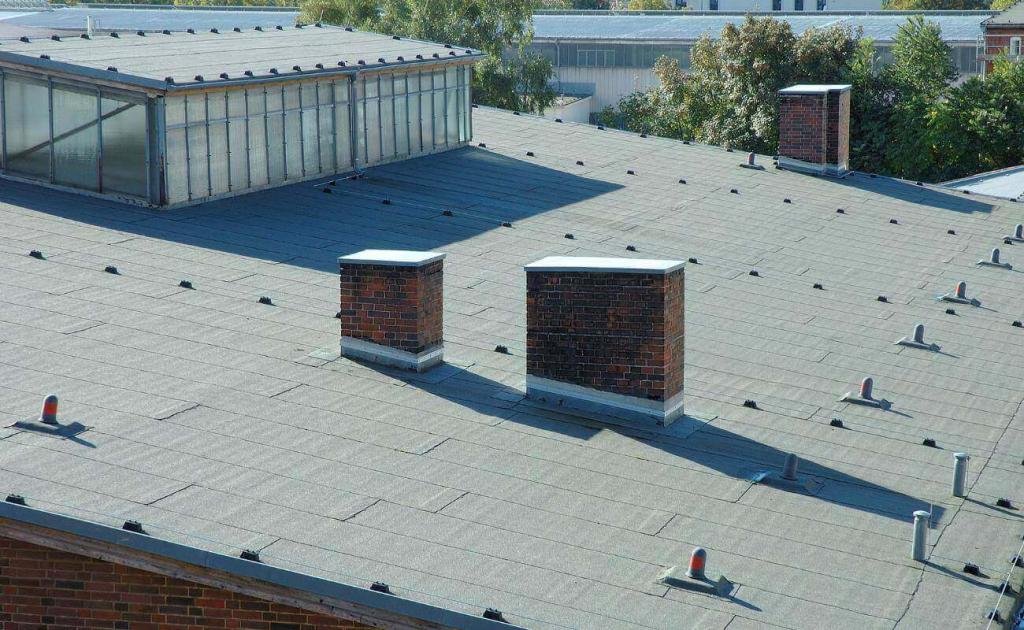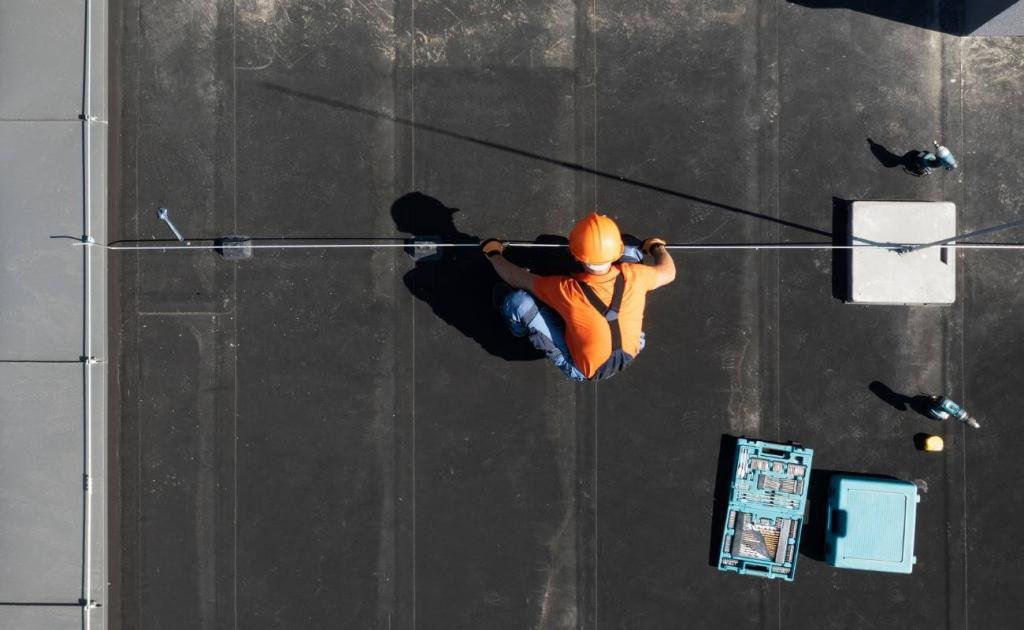A flat roof needs replacing when it displays major signs of wear like persistent leaks or visible damage. Frequent pooling water also indicates a need for replacement.
Knowing when to replace a flat roof is crucial to maintain your property’s integrity and value. Flat roofs, typically found on commercial buildings, require particular attention due to their unique drainage challenges compared to pitched roofs. Regular inspections can reveal key indicators such as cracking, blistering, or the roof’s age nearing its expected lifespan.
As a property owner, understanding these signs ensures proactive maintenance, potentially saving on costly roof repairs from unnoticed issues. An effective maintenance strategy includes not only scheduled inspections but also immediate action when these warning signs appear, safeguarding your investment and ensuring a sturdy roof over your head.
The Lifespan Of Flat Roofs
Typical Materials And Durability
Flat roofs come in various materials, each with its own durability. The most common materials include:- EPDM (Ethylene Propylene Diene Monomer): A rubber roofing known for weather resistance, usually lasts about 25 years.
- TPO (Thermoplastic Polyolefin): Reflects UV rays, can last over 30 years.
- PVC (Polyvinyl Chloride): Combats chemicals, fire, and water, often holding up for 20 years.
- Modified Bitumen: A cocktail of asphalt and rubber, providing a lifespan of about 20 years.
- Built-Up Roof (BUR): Multiple layers mean it could last 15-30 years.

Flat Roof Repair
Factors Affecting Roof Longevity
The life expectancy of a flat roof isn’t solely tied to its material. Several factors play a role:| Factor | Effect on Longevity |
|---|---|
| Installation Quality | Expert roof installation can mean a longer-lasting roof. |
| Maintenance Routine | Regular checks and fixes can extend a roof’s life. |
| Climate | Harsh weather can lead to more wear and damage. |
| Foot Traffic | More traffic can cause quicker deterioration. |
| Drainage Quality | Poor drainage may cause water pooling and damage. |
Visible Damage: What To Spot
Cracks And Tears
Your flat roof should have a smooth, unbroken surface. Cracks and tears are not just unsightly; they can be gateways for water infiltration. Look for these signs:- Cracks in the roofing material or seams.
- Tears or splits that may appear around objects penetrating the roof (like vents).
- Blisters indicating trapped moisture under the roofing layer.
Water Pooling And Leakage
Flat roofs need a slight slope to funnel water towards drains. Without it, water will pool. Prolonged pooling weakens the roof structure. Here’s how water damage manifests:| Sign | Implication |
|---|---|
| Water Pools | Indicative of a failed slope or drainage. |
| Stained Ceilings | May suggest water has seeped inside. |
| Visible Drips | Immediate attention needed – active leakage. |
Structural Warnings
Sagging Or Blisters In The Roof
Sagging sections on a flat roof often indicate structural deterioration. Water accumulation is usually the primary cause of such sagging. A deep sag tends to pool more water, which exacerbates the problem. Roof blisters appear as raised areas where the roofing material separates from its layer underneath. Blisters can burst and lead to leaks. Both sagging and blisters should prompt an immediate inspection.Damage Around Roof Features
Areas surrounding roof features such as vents, pipes, or chimneys are prone to damage. It is vital to check for:- Cracks or splits around features
- Wear and tear on flashing
- Signs of water ingress through seams or joints

Interiors Give Clues Too
Stains On Ceilings And Walls
Visible stains on the ceilings and walls often indicate a leaky roof. Not simply an eyesore, these marks are warning signals. Roofs should keep water out, not decorate your interiors with water patterns. Bold, brownish, or yellowish stains spell trouble. These blemishes frequently map out where water from rain or snow has trekked through the roof and into your home or business.Internal Moisture Issues
Moisture within a room can point directly to a failing flat roof. Persistent dampness or a musty smell reveals an invasion of water you can’t overlook. Be vigilant for:- Peeling paint or wallpaper: This suggests water seeping in and breaking the bond between wall and décor.
- Warped walls or ceilings: Moisture makes surfaces swell, distorting their shape.
- Visible mold: Mold loves moisture. Its presence indicates prolonged wetness, possibly from a leak above.
- Droplets or damp spots: Sometimes, water from roof leaks makes its presence known through tiny puddles or visibly wet surfaces.
Professional Inspections And Decisions
When To Call An Expert
If you notice any of the following, it’s time to seek a professional:- Persistent Leaks: Water ingress even after repairs could suggest deeper problems.
- Ponding Water: Water that stands on the roof for over 48 hours can be harmful.
- Sagging: This may indicate structural issues that require immediate attention.
- Visible Damage: Tears, blistering, or significant wear in the roofing material can not be ignored.
- Energy Bills Increasing: Poor roof insulation can lead to higher energy costs.
Repair Or Replace: Making The Call
The decision to repair or replace a flat roof isn’t always straightforward. Consider the following:| Repair | Replace |
|---|---|
| Minor, localized damage | Extensive or widespread damage |
| Relatively new roof | Roof near the end of its lifespan |
| Lower immediate costs | Higher initial costs but long-term savings |
Conclusion
At Brick Tech Contracting Corp, we understand the importance of recognizing the signs that your flat roof needs replacement. Regular inspections, identifying visible damage, and keeping track of your roof’s age are all crucial steps in maintaining a healthy roof.
Don’t wait for costly repairs! Prioritize the safety and efficiency of your property by contacting our team of experts here at Brick Tech Contracting Corp. We’re a leading provider of exceptional flat roof services in NYC and Nassau County. Our experience guarantees a smooth and successful roof replacement, ensuring your property remains protected for years to come.
Remember, acting promptly can save you from significant water damage and other costly issues. Contact Brick Tech Contracting Corp. today for a free consultation and protect your investment!
Frequently Asked Questions For How Do You Know When A Flat Roof Needs Replacing
What Are Signs Of Flat Roof Failure?
Visible signs include persistent leaks, large cracks, or significant pooling of water on the roof surface indicating it may be time for replacement.
How Often Should Flat Roofs Be Replaced?
Flat roofs generally require replacement every 15 to 20 years depending on the material quality, maintenance, and weather conditions.
Can You Repair Flat Roofs Instead Of Replacing?
Minor issues such as small punctures or leaks can often be repaired, but widespread damage typically necessitates roof replacement.
What Is The Cost To Replace A Flat Roof?
The cost varies widely based on size, material, and labor, but on average, it can range from $5 to $20 per square foot.
What Increases Flat Roof Lifespan?
Regular maintenance, timely repairs, proper drainage, and choosing durable roofing materials help increase a flat roof’s lifespan.








